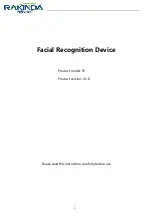
17
-EN
EN
F
ES
Underwater recording
Recording underwater is different from recording on land because it is affected by the
clarity, depth of the water and the light condition. The following are hints for good
recording underwater.
Color characteristic underwater
Water absorbs light, especially red light, so that objects in deep water are seen bluish.
The color of objects is affected by the clarity of the water.
To record in natural color, use the supplied color filter.
Best time for recording
The best recording time is from 10:00 a.m. to 2:00 p.m. When the sun its highest,
optimum results can be obtained.
Subject size underwater
Since the refractive index underwater is higher than that in air, an object appears 1/4
more closer, and therefore larger. This phenomenon affects the lens on the camcorder as
well as human eye. Using the supplied wide-conversion lens is recommended.
Camera work on slow and stable motion
When recording, keep your body stable.
An unstable shot will be magnified on the TV screen. Move the camcorder as slow as
possible. As most of the object underwater move, you can record a good program
without moving the camcorder.
Underwater video light
In deep water or under locks where direct sunlight does not reach, recording with an
underwater video lights is recommended.
To record at night, use a powerful underwater video light.
Note on recording underwater
• Be sure to follow the safety rules for diving, such as diving period and depth.
• Remove the bubbles from the outside of the front glass before recording.
Attachable to the both
sides of video light
shoe.
Underwater video light such as
Sony HVL-ML20 (not supplied)
Wide-conversion lens
Color filter
















































